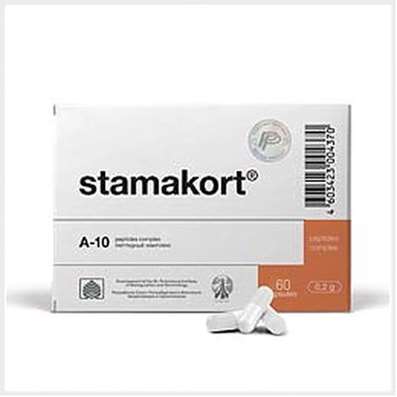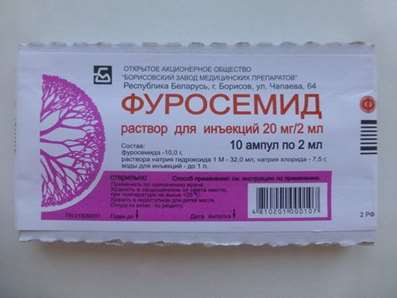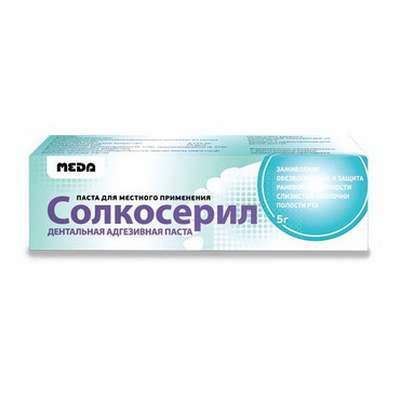Instruction for use: Epinephrine (Epinephrinum)
I want this, give me price
Chemical rational name: (R) -4- [1-Hydroxy-2- (methylamino) ethyl] -1,2-benzenediol (as hydrochloride or tartrate)
Pharmacotherapeutic group:
Sympathomimetic drug
Hypertensive agents
CodeCAS 51-43-4
Characteristics substance of Epinephrine
White or white with a grayish white crystalline powder, readily soluble in water, slightly soluble in alcohol, varies under the influence of light and oxygen.
The nosological classification (ICD-10)
E16.2 Hypoglycaemia, unspecified
H40.1 Primary open-angle glaucoma
J45 Asthma
R57 Shock, not elsewhere classified
T78.2 Anaphylactic shock, unspecified
T79.4 Traumatic shock
T81.1 Shock during or after the procedure, not elsewhere classified
Pregnancy and breast-feeding
Category effects on the fetus by FDA - C.
Pharmacological Properties of EpinephrinePharmachologic effect
Alpha- and beta-adrenergic stimulant.
At the cellular level, the activation of adenylate cyclase due to the action on the inner surface of the cell membrane, increase the intracellular concentration of cAMP and Ca2 +. At very low doses, at an infusion rate of less than 0.01 mcg / kg / min may reduce blood pressure due to vasodilatation of the skeletal muscles. At speed the introduction of 0,04-0,1 mg / kg / min increases heart rate and force of heart contractions, CRM and IOC, reduces peripheral vascular resistance; above 0.02 ug / kg / min, constricts blood vessels, increases blood pressure (systolic mainly) and CSO. Pressor effect can cause short-term reflex slowing of the heart rate. It relaxes smooth muscles of the bronchi. Doses above 0.3 mg / kg / min, reduced renal blood flow, blood flow to internal organs, skin tone and motility of the gastrointestinal tract. Pupils dilate, thereby reducing the production of intraocular fluid and intraocular pressure. It causes hyperglycemia (increases gluconeogenesis and glycogenolysis) and increases in plasma free fatty acids. It improves conductivity, excitability and automatism infarction. It increases myocardial oxygen demand. Inhibits antigen-induced release of histamine and leukotrienes, removes spasm of the bronchial tubes, prevents the development of edema of the mucosa. Acting on the alpha-adrenergic receptors located in the skin, mucous membranes and internal organs, causes vasoconstriction, decreased the rate of absorption of local anesthetics, enlarges and reduces the toxic effects of local anesthesia. Stimulation of the beta2-adrenergic receptors accompanied by increased excretion K + out of the cell and can lead to hypokalemia. With intracavernosal administration reduces blood circulation in the corpus cavernosum. The therapeutic effect is almost instantly with a / in the introduction (duration - 1-2 minutes), after 5-10 minutes after s / to the introduction (maximum effect - 20 minutes) with the / m introduction - the start time of the effect of the variability.
Pharmacokinetics
When the / m or s / c administration is well absorbed. Parenteral administration, is rapidly destroyed. It is also absorbed when endotracheal and conjunctival injection. TCmax for n / a and a / m introduction - 3-10 min. Penetrates through the placenta, into breast milk, it does not penetrate the blood-brain barrier. Metabolized mainly MAO and COMT sympathetic nerve endings in and others. Fabrics as well as in the liver to inactive metabolites. T1 / 2 at / in the introduction - 1-2 minutes. Report the news mostly as metabolites: vanillylmandelic acid, sulfates, glucuronides; as well as in small quantities - unchanged.
Indications for Epinephrine
Immediate type allergic reactions (including urticaria, angioedema shock, anaphylactic shock), developing the application of drugs, serums, blood transfusion, the use of food, insect bites or other allergens introduction.; asthma (cupping), bronchospasm during anesthesia; asystole (including on the background of which developed acute AV block III century.); bleeding from surface vessels in the skin and mucous membranes (including gums), hypotension, not amenable to adequate volumes of replacement fluids (including shock, trauma, bacteremia, open heart surgery, kidney failure, heart failure, overdose of drugs), the need for extension of local anesthetics; hypoglycemia (due to insulin overdose); open-angle glaucoma, during surgery on the eyes - swelling of the conjunctiva (the treatment), to expand the pupil, ocular hypertension, stop bleeding; priapism (treatment).
Contraindications for Epinephrine
Hypersensitivity GOKMP, pheochromocytoma, hypertension, tachyarrhythmias, ischemic heart disease, ventricular fibrillation, pregnancy, lactation.
Precautions: Metabolic acidosis, hypercapnia, hypoxia, atrial fibrillation, ventricular fibrillation, pulmonary hypertension, hypovolemia, myocardial infarction, shock nonallergic genesis (including cardiogenic, traumatic, hemorrhagic), thyrotoxicosis, occlusive vascular disease (including history - arterial embolism, atherosclerosis, Buerger's disease, cold injury, diabetic endarteritis, Raynaud's disease), cerebral arteriosclerosis, angle-closure glaucoma, diabetes, Parkinson's disease, convulsions, prostatic hypertrophy; concurrent use of inhaled anesthetics (halothane, cyclopropane, chloroform), advanced age, children's age.
Category effects on the fetus. C
Dosage and Administration
Anaphylactic shock: in / in slowly 0.1-0.25 mg diluted in 10 ml of 0,9% NaCl solution, if necessary, continue in / drip in a concentration of 0.1 mg / ml. When the patient's condition allows for slow action (3-5 minutes), preferably in the introduction / m (or s / c) of 0.3-0.5 mg in a diluted or undiluted, if necessary, re-introduction - 10-20 minutes (until 3 times).
Bronchial asthma: p / 0.3-0.5 mg in diluted or undiluted form, if necessary, repeated doses may be administered every 20 minutes (3 times), or in / at 0.1-0.25 mg diluted to a concentration of 0.1 mg / ml.
As administered vasoconstrictor / drip rate of 1 ug / min (with a possible increase to 2.10 g / min).
For extension of the local anesthetics: a concentration of 5 mg / ml (dose depends on the type of anesthetic used), for spinal anesthesia - 0.2-0.4 mg.
At asystole: intracardiac 0.5 mg (diluted with 10 ml of 0.9% NaCl solution or other solution.); during resuscitation - 1 mg (in diluted form) to / from every 3-5 min. If the patient is intubated endotracheal instillation possible - optimal doses have not been established, should be 2-2.5 times the dose for the on / in the introduction.
Newborns (asystole): I / O, 10-30 mg / kg every 3-5 minutes, slowly. Children older than 1 month: w / w, 10 mg / kg (in the following as necessary every 3-5 min administered 100 mg / kg (after introduction of at least 2 standard doses every 5 minutes can use higher dose - 200 mg / kg). It is possible to use endotracheal administration.
Babies with anaphylactic shock: s / c or i / m - 10 mg / kg (maximum - up to 0.3 mg), if necessary administration of these doses is repeated every 15 minutes (3 times).
Babies with bronchospasm: n / a 10 mg / kg (maximum - up to 0.3 mg) dose is repeated as necessary every 15 min (3-4 fold) or every 4 hours.
Local: to stop bleeding in the form of tampons, moistened with a solution of the drug.
In open-angle glaucoma - 1 cap 1-2% solution of 2 times a day.
Side effect. From the CCC: less often - angina pectoris, bradycardia or tachycardia, palpitations, increased or decreased blood pressure at high doses - ventricular arrhythmias; rarely - arrhythmias, chest pain.
From the nervous system: more often - headache, anxiety, tremor; less often - dizziness, nervousness, fatigue, psychoneurotic disorders (agitation, disorientation, impaired memory, aggressive or panic behavior, schizophreniform disorder, paranoia), sleep disturbance, muscle twitching.
From the digestive system: more often - nausea, vomiting.
From the urinary system: rarely - labored and painful urination (prostatic hyperplasia).
Local reactions: pain or a burning sensation in the ground / im injection.
Allergic reactions: angioedema, bronchospasm, skin rash, erythema multiforme.
Other: rarely - hypokalemia; less often - sweating.
Overdose. Symptoms: excessive increase in blood pressure, tachycardia, alternating with bradycardia, cardiac arrhythmias (including atrial fibrillation and ventricular), cold and pale skin, vomiting, headache, metabolic acidosis, myocardial infarction, cranial-cerebral hemorrhage (especially in the elderly patients), pulmonary edema, and death.
Treatment: stop the introduction of symptomatic therapy - to reduce blood pressure - alpha-blockers (phentolamine), with arrhythmia - beta-blockers (propranolol).
Interaction. Antagonists of epinephrine are blockers of alpha and beta-adrenergic receptors.
It reduces the effects of narcotic analgesics and hypnotic drugs.
When applied simultaneously with cardiac glycosides, quinidine, tricyclic antidepressants, dopamine, means for inhalation anesthesia (chloroform, enflurane, halothane, isoflurane, methoxyflurane), cocaine increases the risk of arrhythmias (together should use extreme caution or not to apply); with other sympathomimetic agents - increased severity of side effects from the CCC.; with antihypertensive drugs (including a diuretic) - reducing their effectiveness.
Concurrent administration of MAO inhibitors (including furazolidone, procarbazine, selegiline) can cause a sudden and pronounced increase in blood pressure, giperpiretichesky crisis, headache, cardiac arrhythmia, vomiting; with nitrates - the weakening of their therapeutic action; with phenoxybenzamine - increased hypotensive effect and tachycardia; phenytoin - a sudden drop in blood pressure and bradycardia (depending on the dose and rate of administration); with preparations of thyroid hormones - the mutual reinforcement of action; with drugs that prolong the QT-interval (including astemizole, cisapride, terfenadine) - lengthening QT-interval; with diatrizoate, or yotalamovoy yoksaglovoy acids - increased neurological effects; with ergot alkaloids - increased vasoconstrictor effect (up to the development of severe ischemia and gangrene).
It reduces the effect of insulin
Special instructions
When infusion device to be used with a measuring device in order to control the infusion rate.
Infusions should be carried out in a large (preferably in the center) vein.
Intracardiac injected with asystole, if al. Methods are not available, because there is a risk of cardiac tamponade and pneumothorax.
In the period of treatment is recommended to determine the concentration of K + in the blood serum, the measurement of blood pressure, urine output, IOC, ECG, central venous pressure, pulmonary artery pressure and wedge pressure in the pulmonary capillaries.
Excessive doses of myocardial infarction may exacerbate ischemia by increasing myocardial oxygen demand.
Increases glycemia, in connection with which, in diabetes require higher doses of insulin and sulfonylureas.
With the introduction of endotracheal suction, and the final concentration of drug in plasma can be unpredictable.
Introduction of epinephrine in shock states, not a substitute for blood transfusion, plasma, blood liquids and / or salt solutions.
Epinephrine is impractical to use long (peripheral vasoconstriction leading to the possible development of necrosis or gangrene).
Strictly controlled studies of the use of epinephrine in pregnant women is not carried out. A statistically the logical relationship appearances deformities and inguinal hernia in children whose mothers used epinephrine during I trimester or throughout pregnancy, as reported in one case of the occurrence of anoxia in the fetus after in / in the conduct of epinephrine mother. Epinephrine should not be used for pregnant women with blood pressure above 130/80 mm Hg Animal experiments have shown that when administered in doses 25 times higher than the recommended dose for humans, causing teratogenicity.
When used in lactation period should assess the risk and benefits due to the high probability of occurrence of adverse events in children.
Application for correction of hypotension during childbirth is not recommended because it can delay the second stage of labor; when administered in large doses to weaken uterine contractions may cause long-term atony uterine bleeding.
Can be used in children with heart failure, however, care must be taken because the dosing scheme requires 2 different concentrations of epinephrine.
Upon termination of the treatment the dose should be reduced gradually, as sudden cancellation of therapy may lead to severe hypotension.
Easily destroyed by alkalis and oxidizing agents.
If the solution has acquired a pinkish or brown or contains a precipitate, it can not be entered. The unused portion should be destroyed.

 Cart
Cart





